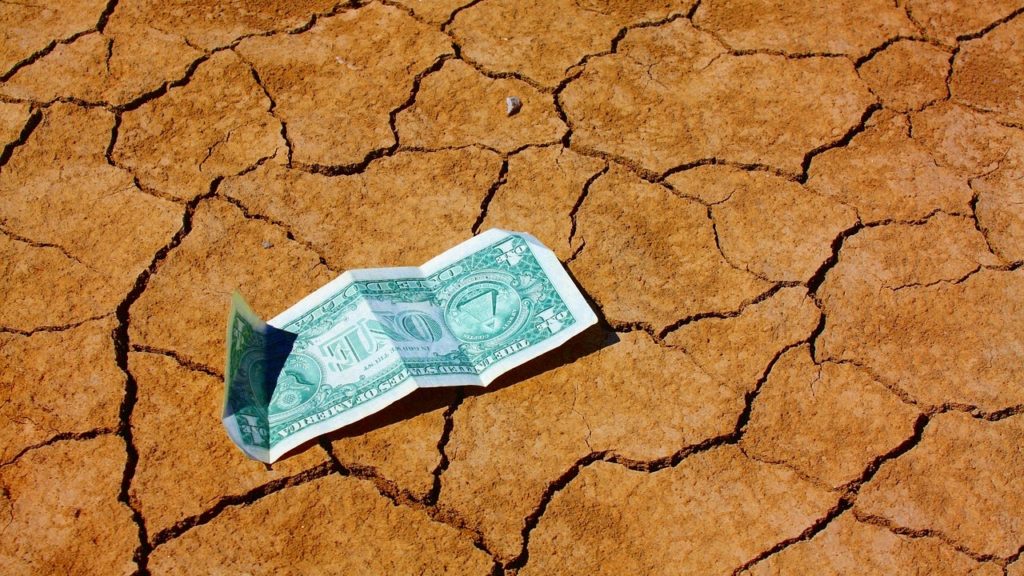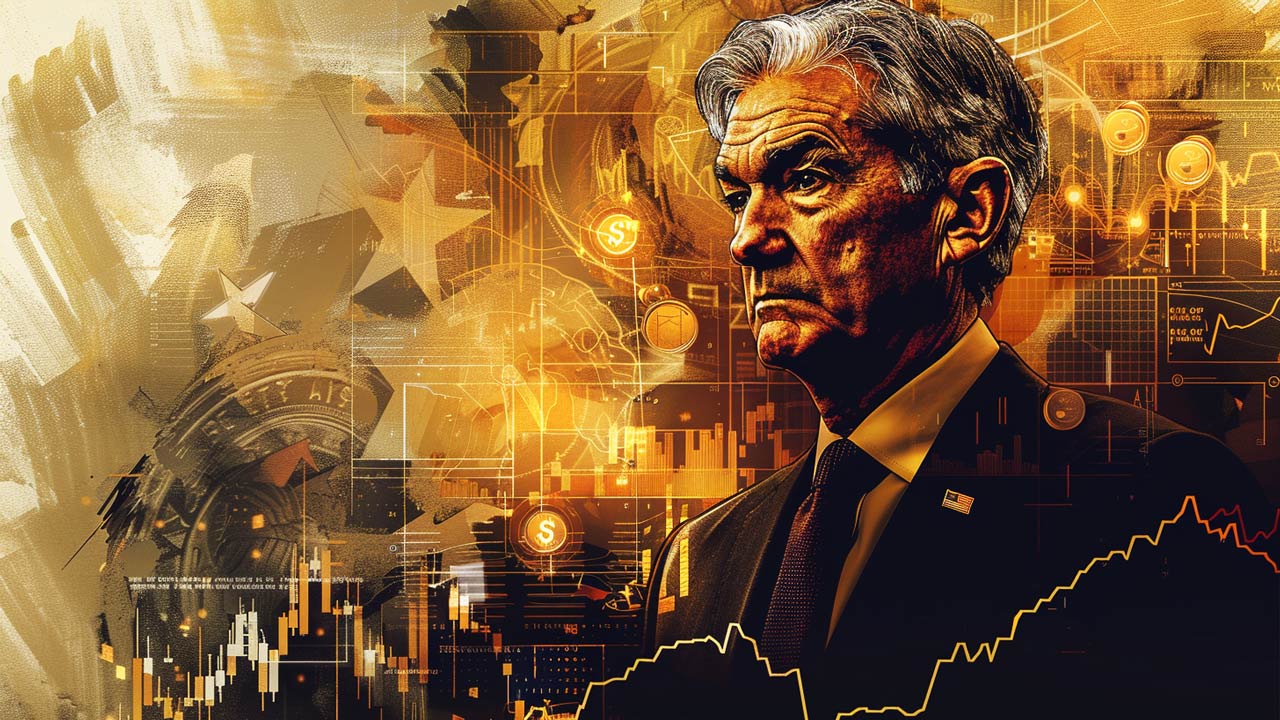“Transitory” Inflation Comes in Hotter Than Expect. Again.
For the sixth month in a row, Consumer Price Index (CPI) data came in much higher than expected. But the question remains: how long will the Fed keep up the “transitory” inflation narrative? And when they do abandon this storyline and acknowledge inflation, what can the central bankers really do about it?
The CPI surged 0.9% month-on-month in June. It was the biggest monthly price increase of the year, blowing away expectations of a 0.5% increase. Stop and think about that number. Prices rose nearly 1% in a single month.
The headline CPI number bandied about in the mainstream media was the 5.5% year-over-year increase. The consensus was for a 5% gain. It was the biggest yearly jump in the CPI since August 2008.
Core CPI, stripping out more volatile food and energy prices, rose 4.5% year-over-year. This also blew away projections for a 3.8% rise. It was the sharpest upward move in core CPI since September 1991. On a monthly basis, core prices rose 0.9% against estimates of 0.5%.
Not only did all of these numbers come in higher than expectations; they came in above the upper range of expectations.
Looking back over the year, consumer prices have gone up more than expected every single month. The CPI in January was up 0.3%. It was up 0.4% in February. It rose 0.6% in March, 0.8% in April and 0.6% in May. If you add up the CPI gains through the first half of the year, the inflation rate comes to 3.6%. If we simply duplicate this trend through the second half of the year, we’re looking at a CPI of over 7%.
And Peter Schiff said in a Tweet he expects prices to rise even faster in the second half of the year.
As big as the price increases were in the first half of the year, the price hikes in the second half will likely be larger as businesses reluctant to raise prices finally pull the trigger.”
How does all of this affect the average American worker? According to the Labor Department, the big hike in prices translated to a decrease in real wages. Real average hourly earnings fell 0.5% in June as the 0.9% CPI increase more than wiped out the o.3% rise in average hourly earnings. In other words, you can’t buy as much stuff this month as you did last month.
It’s becoming increasingly clear that these rising prices aren’t “transitory.” Last week, the IMF warned of a “sustained” inflation rise in the United States. But it appears the Fed is trying to stick to that narrative. After the June CPI data came out, San Francisco Federal Reserve President Mary Daly said the inflation “pop” was expected. She continued to blame surging prices on post-pandemic demand and supply bottlenecks, and she insisted they would likely subside in the coming months.
“Several months of this doesn’t mean that it’s not transitory,” Daly said, leaving one to wonder just how many months prices need to rise before inflation becomes “not transitory.”
Regardless, the mainstream isn’t buying the story the Fed is selling. Wells Fargo senior economist Sarah House told CNBC that inflation pressures remain “more acute than appreciated.”
We are seeing areas where there’s going to be ongoing inflation pressure even after we get past some of those acute price hikes in a handful of sectors.”
In other words – not transitory.
Financial analyst Wolf Richter said this “transitory” inflation is turning into an inflationary spiral. He acknowledges that you can pin some of the price increases on supply issues and a sudden spike in demand as economies open up again post-pandemic. But the rising prices are cascading from product to product and service to service, creating inflation expectations that will eventually bake into the economy.
This surge of inflation is becoming engrained in the inflation expectations of company decision-makers and consumers alike. They’re adjusting to it and in this manner inflation becomes persistent.”
In a nutshell, the overall inflationary environment isn’t transitory, although some of the factors that unleashed the inflationary cascade might be transitory.
The markets reacted to the CPI data as if inflation isn’t transitory, but the Fed is about to do something about it. Gold initially sold off on the CPI data. It did recoup its losses later in the day, but the yellow metal certainly didn’t reflect expectations of persistent inflationary pressure. Meanwhile, the dollar charted its best daily percentage gain in nearly a month. Schiff said higher inflation is only bullish for the dollar to the extent investors “foolishly believe” the Fed will do whatever it takes to bring CPI back down to 2%.
Once investors realize that the Fed is neither willing nor able to contain inflation, the dollar will crash.”
At some point, the Fed will have to acknowledge that inflation is not transitory. Schiff said at that point it will be too late.
By the time the Fed finally admits that higher inflation is not transitory, it will be much too high for the Fed to actually do anything to prevent it from getting even worse. When investors finally figure this out the US dollar and Treasuries will crash and gold will soar.”
Schiff said the markets are half right in recognizing inflation is a bigger problem than the Fed is letting on, but they are bracing for the wrong impact.
Those who have figured out that inflation isn’t transitory still haven’t figured out that the Fed will do nothing to contain it. If the Fed could actually fight inflation it would already be doing so. It’s because it can’t that it’s pretending sustained inflation is transitory,” Schiff said in a tweet. “The markets are bracing for the wrong outcome. Investors expect the economy to slow as the Fed pumps the brakes to successfully fight off inflation. In reality, the Fed will step harder on the gas even as inflation accelerates to prevent the economy from stalling into recession.”





 Since Nayib Bukele became president of El Salvador, El Salvador has been in American media and global political discussion more than ever. While much of the attention focuses on Bukele’s mass incarceration of gang members and a decline in homicide of over 70%, Bukele has also drawn attention to his favoritism towards Bitcoin and how he […]
Since Nayib Bukele became president of El Salvador, El Salvador has been in American media and global political discussion more than ever. While much of the attention focuses on Bukele’s mass incarceration of gang members and a decline in homicide of over 70%, Bukele has also drawn attention to his favoritism towards Bitcoin and how he […] With gold hitting yet another awe-inspiring all-time high in the wake of Powell’s remarks reassuring markets (more or less) to expect rate cuts in 2024, a few analysts are pointing out risk factors for a correction — so is there really still room to run?
With gold hitting yet another awe-inspiring all-time high in the wake of Powell’s remarks reassuring markets (more or less) to expect rate cuts in 2024, a few analysts are pointing out risk factors for a correction — so is there really still room to run? Gold hit a new all-time nominal high, surpassing the previous record set in December of the previous year. The precious metal’s price reached approximately $2,140, indicating a robust and continuing interest in gold as a safe-haven asset, despite a rather peculiar lack of fanfare from the media and retail investors. This latest peak in gold […]
Gold hit a new all-time nominal high, surpassing the previous record set in December of the previous year. The precious metal’s price reached approximately $2,140, indicating a robust and continuing interest in gold as a safe-haven asset, despite a rather peculiar lack of fanfare from the media and retail investors. This latest peak in gold […] The gold price has been surging, with unprecedented central bank demand gobbling up supply. It has been a force to behold — especially as US monetary policy has been relatively tight since 2022, and 10-year Treasury yields have rocketed up, which generally puts firm downward pressure on gold against USD.
The gold price has been surging, with unprecedented central bank demand gobbling up supply. It has been a force to behold — especially as US monetary policy has been relatively tight since 2022, and 10-year Treasury yields have rocketed up, which generally puts firm downward pressure on gold against USD.  Total gold demand hit an all-time high in 2023, according to a recent report released by the World Gold Council. Last week, the World Gold Council (WGC) released its Gold Demand Trends report, which tracks developments in the demand for and use of gold around the world. Excluding over-the-counter (OTC) trade, 2023 gold demand fell slightly from 2022 […]
Total gold demand hit an all-time high in 2023, according to a recent report released by the World Gold Council. Last week, the World Gold Council (WGC) released its Gold Demand Trends report, which tracks developments in the demand for and use of gold around the world. Excluding over-the-counter (OTC) trade, 2023 gold demand fell slightly from 2022 […]